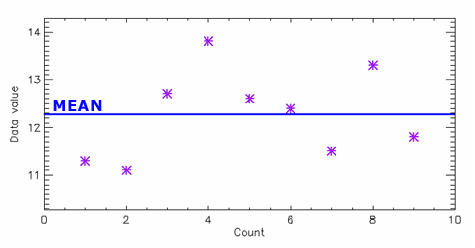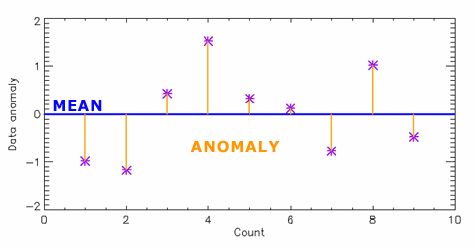|
|
Below, we provide a bit more detail about the concept of an "anomaly". If you feel comfortable with this term, please feel free to proceed to the next section. An anomaly is nothing more than the difference from a mean or average value. The example diagram below shows nine data measurements as purple stars, and the mean of the measurements is a solid blue line. 
The anomaly for each data point is simply the difference from the mean value. In the diagram below, the anomalies are represented by the length of the orange lines. 
When we talk about our daily global 5km Sea Surface Temperature (SST) Anomaly product, we are talking about the difference between a 5km satellite SST value and the mean (average) 5km satellite SST for a specific location on a specific day of the year. A positive anomaly means that the temperature at the ocean's surface is warmer than the mean; a negative anomaly means that the temperature at the surface is cooler than the mean.
|
|||||||||||
|
|
||||||||||||